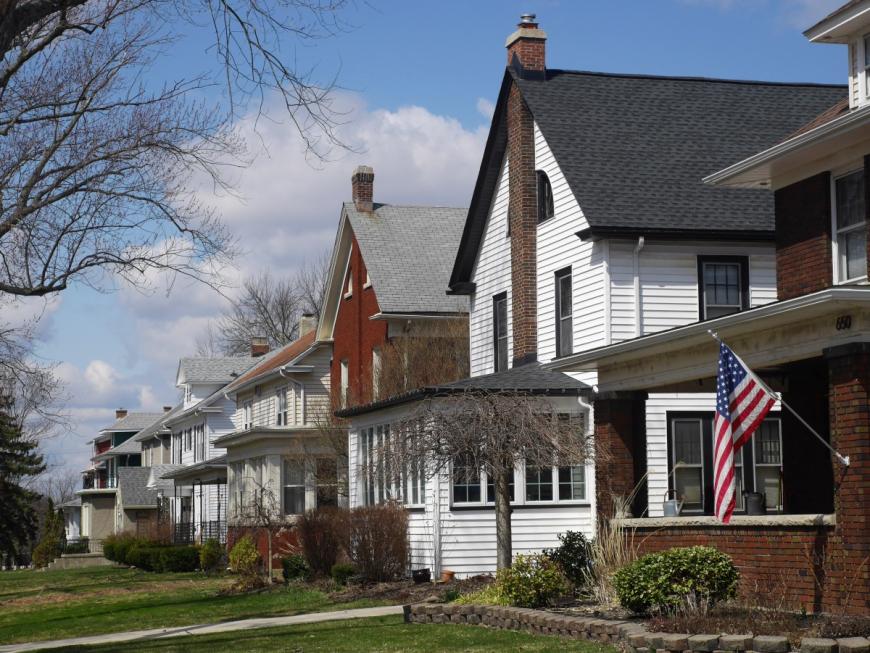
Facing foreclosure? [how to get your mortgage back on track]
In a previous blog, I talked about how to get your mortgage payments back on track with a loan modification. Unfortunately, a modification isn’t always possible. You then face foreclosure on your home. Even then, there are strategies that can buy you time to get the mortgage back on track.
When does the foreclosure process begin?
Foreclosure does not begin the moment you start missing mortgage payments. Generally, the process starts when you have missed payments for a total of three or four months. The collections department will send reminders that you are behind on the mortgage. Mortgage companies will generally accept partial payments; however, only after you pay the equivalent of one month’s full payment will payments be applied to your account.
Notices from your mortgage company and its attorney
- If you don’t eventually become current on your mortgage (as defined by the mortgage company’s payment policy), the company will issue a Notice of Intent to Accelerate. This letter essentially states that if homeowner is unable to bring their mortgage current, the mortgage company will soon contact a foreclosing attorney’s office to begin the foreclosure process.
- Once contacted, the foreclosing attorney’s office sends a letter called the Pre-Foreclosure Notice. This letter states the mortgage company has retained the attorney and lists the full amount owed. It also lets you know that foreclosure prevention counseling services, such as LSS Financial Counseling, are available. You have 30 days to dispute in writing any possible discrepancies in the stated dollar figures or other relevant information.
Once they send the Pre-Foreclosure Notice, the mortgage company will often no longer accept partial or even full payments. If the homeowner continues to send payments, these funds will either be returned or put into a special account called a “suspense account.”
- After the Pre-Foreclosure Notice is sent, the attorney will schedule a sheriff’s sale date and issue a Sheriff’s Sale Notice. The notice states that there is now a date to sell the property. The foreclosing attorney’s office must give you at least a four-week notice, along with the time and place of the sale. The Sheriff’s Sale Notice must be given in person to the homeowner or to anyone that answers the door at the property. The person who delivers the notice must either be a process server (someone hired by the foreclosing attorney’s office) or the local county sheriff’s representative.
For six consecutive weeks before the Sheriff’s Sale date, a foreclosure notice is published in Minnesota Finance and Commerce magazine and/or a local publication where the property is located. The notice in the paper includes the scheduled sale date, property address and the people on the title.
Remedies to prevent a Sheriff’s Sale
Even at this point, it’s still not too late to save your house. If that is your goal, it is vital that you do everything you can to avoid the sheriff’s sale from occurring. Once that sale takes place, it is much more difficult to keep the house.
- Reinstatement - You can still try to pursue a modification and have the right to “reinstate” the mortgage. Reinstatement means paying the entire past due amount, late fees and attorney fees to bring the mortgage current. To get the correct amount due, the homeowner needs to contact the mortgage company to request the “reinstatement figure.” This reinstatement quote must be provided in writing within three days after the request. If you pay the full reinstatement amount by the expiration date stated on the quote, all foreclosure efforts cease.
- Postponement by Mortgagor – Modifications and reinstatement aren’t always possible. Another tool you have is a one-time Postponement by Mortgagor. This tool is unique to Minnesota, and you must complete it at least 15 days before the sheriff’s sale.
A successful postponement delays a sheriff’s sale by five months. If there is two-thirds or more equity in the property, the sheriff’s sale might be delayed up to 11 months. This process buys you valuable time to either present a stronger case for modification (e.g. you aren’t working now but will in a few months) or continue efforts to reinstate the mortgage.
- Loss mitigation packet – If you can’t reinstate the mortgage or didn’t do a postponement, try sending a loss mitigation packet to the mortgage company to postpone the sheriff’s sale. The mortgage company would need to receive the packet by midnight on the seventh business day before the scheduled sheriff’s sale. This, too, is unique to Minnesota law. If you have previously been denied, you will have to prove something has changed for them to review the packet and postpone the sheriff’s sale.
- Bankruptcy – If all the above fail, you can file bankruptcy. Bankruptcy can help eliminate debts or set up a repayment plan under the protection of the federal bankruptcy court. As a result of filing bankruptcy, an Automatic Stay will occur. Such a stay can temporarily stop a sheriff’s sale from happening right up until the sale date.
A bankruptcy, especially a Chapter 13 bankruptcy, might also allow you to get your mortgage back on track and, in turn, keep the house. Consult with two or three reputable bankruptcy attorneys before taking this route. Know that there are limits to how often you can file bankruptcy. Also, it’s crucial that you can afford your regular monthly mortgage payment moving forward, as the payment amount typically remains the same as it was before the bankruptcy.
Redemption period
If the sheriff’s sale does occur, you are now in the “redemption period.” This is the amount of time you can legally live in the house after the sale. In Minnesota, the redemption period is typically six months – 12 months if the borrower has two-thirds or more equity in the property and often if you have a federal loan through the U.S. Department of Agriculture. However, if you completed the Postponement by Mortgagor and the sheriff’s sale still took place, you can only stay in the home five weeks. Postponement does give you extra time to stay in the house before the sheriff’s sale, but it then reduces the normal allotted six-month redemption period time frame.
You are still responsible for maintaining the property during the redemption period, including lawn mowing and snow shoveling. If your property is deemed abandoned, the redemption period can be reduced to five weeks.
During the redemption period, you can still keep the house by:
- Redeeming the property. You pay the FULL amount of the final bid at the sheriff’s sale, plus any applicable fees. You would then own the house outright.
- Refinancing the mortgage. This is very unlikely. Your credit has been significantly harmed because you have missed mortgage payments, and you now have a foreclosure on your credit report.
You have the right to sell the house if the redemption period hasn’t expired. However, the buyer can’t be affiliated with you in any way. If, in the end, none of the steps are taken to redeem, the homeowner will have to vacate the property when the redemption period ends.
We’re here to support you
LSS Financial Counseling is here to help Minnesota residents with free, expert counseling and advice on preventing foreclosure. If you are in Minnesota and worried about your mortgage payment, contact LSS today at 888.577.2227 to schedule your free phone session, or call us even if you just have a question. Or, if you’d like assistance creating a realistic budget and plan to build up savings or pay off debt, LSS can help. Call today or get all your support online.
If you’re outside of MN, visit the HUD website to search for a local counseling organization. All HUD-approved counseling is free. Never pay for help with your mortgage.
**Please note that none of the information above is legal advice. Be sure to consult with a reputable attorney regarding bankruptcy or other legal questions.

Author Dan Park is a certified financial counselor and financial counseling supervisor with LSS.
